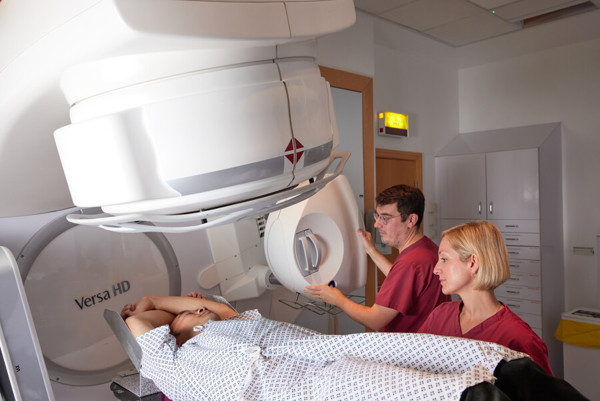Stereotactic ablative body radiotherapy (SABR) is the use of multiple small radiation beams to deliver high dose radiotherapy. This is shaped to the size of the tumour and spares the surrounding normal tissue and organs as much as possible.
SABR is most often used on small, well-defined tumours. Due to the high precision and accuracy, SABR can be delivered over fewer treatments than standard radiotherapy. This is because it uses a higher dose of radiation per treatment.
With traditional radiotherapy, you usually have 20 to 30 treatments. SABR can be delivered over three, five or eight treatments, meaning that fewer hospital visits are required.
How SABR works
Planning for treatment starts with a special (4D) CT scan to determine the area to be treated and map the target area as it moves over time with the patient’s breathing cycle. After the CT scan, you will be given an appointment to start treatment about one week later. During this time, the team will create, calculate and check your treatment plan.
On your first treatment appointment, you will be carefully positioned on a special linear accelerator and we will check that your treatment is being delivered to the planned location using specialist imaging techniques.
Who can benefit from SABR?
It is most often used on small, non-small cell, well-defined tumours.
Our service
We have 6 specialist linear accelerators at our site in Withington and a group of specially trained radiographers, physicists and clinical oncologists dedicated to delivering stereotactic lung radiotherapy.

